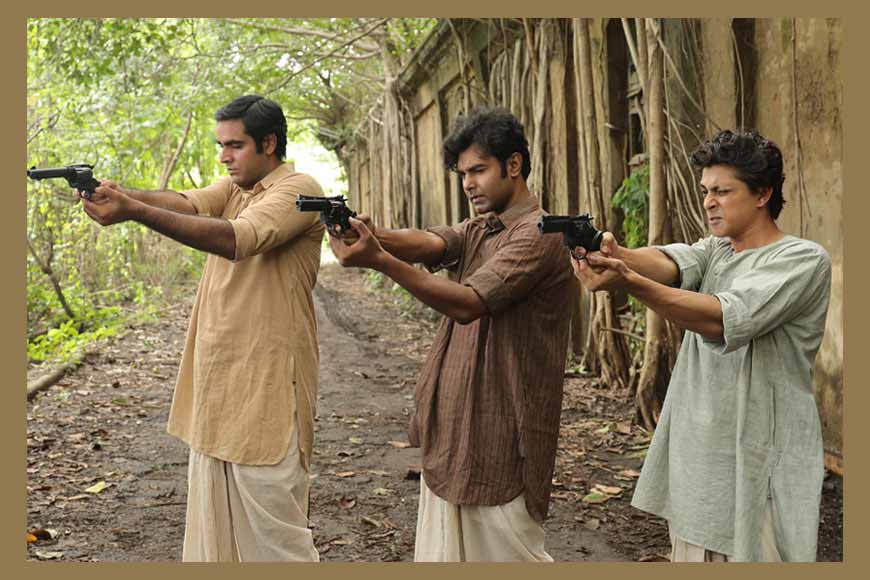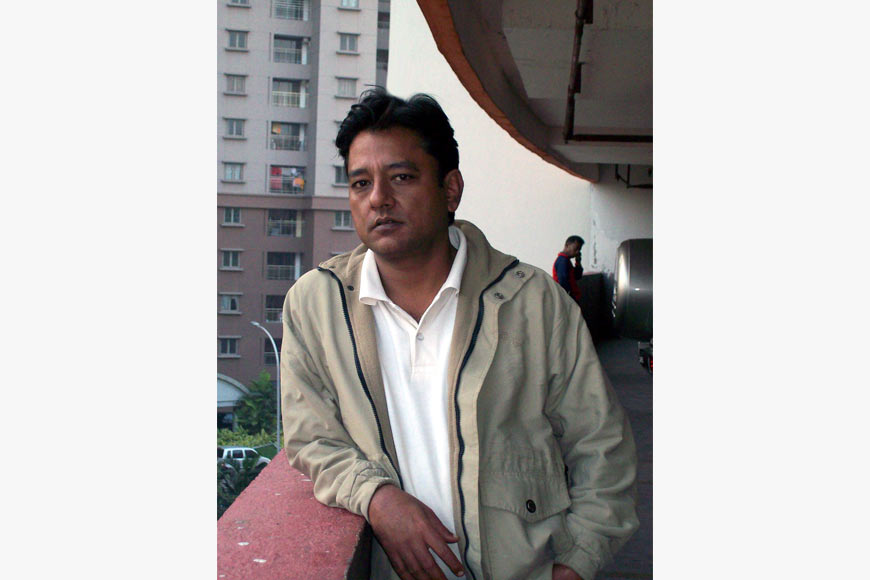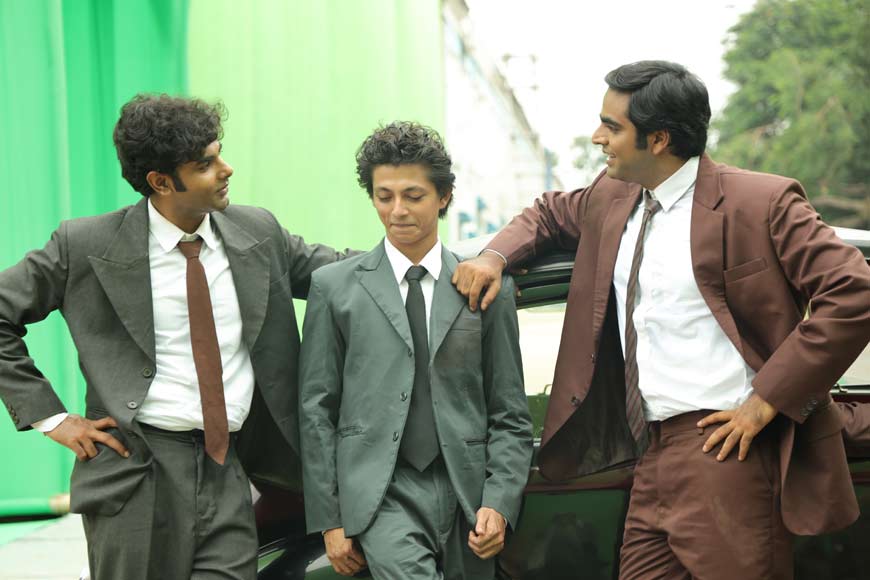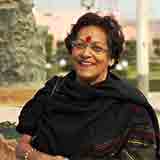Benoy-Badal-Dinesh pack powerful punch with 8/12

The film industry in Bengal is flooded with young filmmakers with stardust in their eyes, desperate to cut their teeth in film-making with a striking debut. Arun Roy recreates history by fictionalizing it through the language of cinema, but does a brilliant job of it, as his latest offering shows. A glimpse of his first three feature films helps understand his choice of genre and how he uses the language of cinema to tell real stories we are either not aware of, or have forgotten completely.
Roy’s first full-length feature film Egaro (Eleven) was a celluloid reconstruction of Mohan Bagan’s historic winning of the IFA Shield against the East Yorkshire Regiment on July 29, 1911. The narrative blends fact with fiction to create a parallel theme of an underground revolution in Bengal, and one of the players is a member of this revolutionary group. Simultaneously, the director conveys the message that Mohan Bagan is not just a football club but a metaphor for an India desperate to drive the British imperialists back to Great Britain.
Roy's new film 8/12, which released today, talks about Benoy Basu (23), Badal Gupta (19) and Dinesh Gupta (19), who on December 8, 1930 mounted a suicidal assault on Writers Building to kill the tyrannical British Inspector General Simpson and strike at the heart of the British-Indian administration. One of Kolkata's busiest areas is called BBD Bag after these three martyrs, but few today even know the full names of B, B and D.
His second film Cholai is another example of his commitment. The film retells the real story of how a batch of adulterated country liquor sold to rickshaw drivers and poor leather workers in 10 villages in and around Mograhat and Mandirbazar in South 24 Parganas and Sangrampur, beginning December 14, 2011, killed more than 170 people. The liquor, known locally as 'cholai', is believed to be produced by a local mafia and sold in local shops for as little as five rupees for a half-litre pouch.
His third film was Hiralal, a biopic of Hiralal Sen, a noted photographer and one of the pioneers of filmmaking and film exhibiting in India. The tragic story details the life of Sen from the days when he was merely a still photography enthusiast, through his meteoric rise in films, closing with his subsequent fall from grace. Sen is credited with having made India’s first advertising film as well as its first political documentary. Yet, scarcely anything is known about the man who is among the pioneers of Indian cinema.
 Arun Roy Director of Eight by Twelve
Arun Roy Director of Eight by Twelve
Roy's new film 8/12, which released today, talks about Benoy Basu (23), Badal Gupta (19) and Dinesh Gupta (19), who on December 8, 1930 mounted a suicidal assault on Writers Building to kill the tyrannical British Inspector General Simpson and strike at the heart of the British-Indian administration. One of Kolkata's busiest areas is called BBD Bag after these three martyrs, but few today even know the full names of B, B and D.
“This is precisely why I decided to name my film 8/12 and not use a proper noun. I realised that the numbers 9/11 are immediately recognised by almost every world citizen, and we link the date with the Twin Towers in the USA. I wanted to bring the date 8/12 to the fore so that the sacrifice of these three young men are carved in the minds of every Bengali and subsequently, every Indian,” says the director.
8/12 opens with a voiceover by actor Sabyasachi Chakraborty, who narrates the incidents that led to the capture and escape of militant revolutionary Ananta Singha, which happened just around the beginning of this film’s timeline. The camera (Gopi Bhagat) swings across to capture a group of men in their forties, discussing how to counter the horrific torture of ordinary citizens by the police during the 1920s and 30s in Kolkata and Bengal.
The torture was triggered by the British desperation to capture Ananta (one of the leaders of the Chittagong Armoury incident) and 'Master da' Surjo Sen, a teacher who trained his students to become armed rebels. The torture and rape of young women, and the killing of young boys through inhuman torture, finally forced Ananta to surrender.
Neither he nor Surjo Sen appear in the film, so that the focus does not shift from the valour and confidence of these three young men, active members of Bengal Volunteers, founded by Netaji Subhash Chandra Bose during the 1928 Kolkata session of the Indian National Congress. Led by Major Satya Gupta, the group continued its activities even after the session ended.
‘Operation Freedom’, launched in 1930, was a violent protest against police repression in the various prisons of Bengal. We see Netaji Subhas Chandra Bose raising his voice against the inhuman treatment meted out to political prisoners by stuffing 100 captives in a cell that holds only 30.
In August 1930, the Bengal Volunteers planned to kill Inspector General Lowman. Benoy ultimately shot him at the Medical School Hospital in Dhaka, escaping to Kolkata soon after. Next, Benoy, Badal and Dinesh were asked to target Simpson, as well as other senior British officers, to strike terror in the Raj’s official circles.
The narrative is divided into several segments that seamlessly weave into one another. The film appears to have been shot in black and white, but there are splashes of red to show blood and shades of golden yellow and orange to denote fire.

Says Roy, “During the time span of the film, life in Bengal, or rather, India, was divided into black and white, and colour came only in the form of blood to depict the massive deaths that happened without reason. The fire depicts a desire to set fire to everything on the one hand, and the funeral pyres on the other.”
The final segment narrating the cross-firing that happens in the different sections of Writers Building takes around 15 to 20 minutes, finally felling the British officers targeted by the three youngsters, who ultimately either take cyanide pills or shoot themselves in the head.
Roy, who is celebrated for his passion for research without which none of his four films would have been the classics they have become, gives all credit to researcher Rudrarup Mukherjee, who lives in Howrah and is ready with any historical facts and data anyone asks for within half and hour.
In August 1930, the Bengal Volunteers planned to kill Inspector General Lowman. Benoy ultimately shot him at the Medical School Hospital in Dhaka, escaping to Kolkata soon after. Next, Benoy, Badal and Dinesh were asked to target Simpson, as well as other senior British officers, to strike terror in the Raj’s official circles.
As with all his films, Roy has drawn his young cast almost entirely from theatre. Some, like Kinjal Nanda and Arna Mukherjee, are repeated from Hiralal while others, such as Remoo who portrays Dinesh Gupta, have faced a movie camera for the first time. The veteran underground political activists have been given their original names and portrayed with great conviction by established actors like Saswata Chatterjee (Hemchandra Ghosh), Sankar Debnath (Rasomoy), Debraj Mukherjee (Satya Gupta) and Gulshanara Khatun (Kamala). The acting honours are equally distributed among the seniors, but it is the youngsters Kinjal, Arna and Remoo who really steal the honours with Kinjal running away with the cherry.
Roy is extremely grateful to young producer Kan Singh Sodha, a businessman from Rajasthan who came forward to produce the film and has promised Roy that he will produce his following films too.
The only negative point this critic has to make about the film is its very loud background score that does not give us even a moment of silence. When asked why, Roy says, “This is not a tragedy I made. It is a celebration, a matter of pride for us. There cannot be a celebration without music, can there?”











